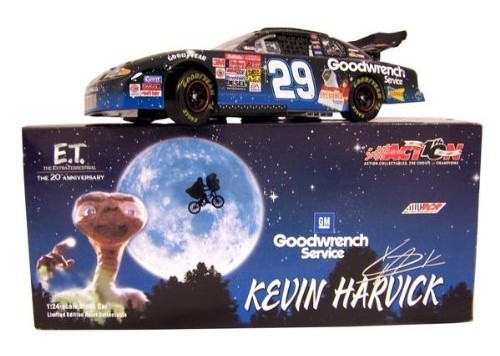Bathroom Readers' Institute's Blog, page 91
February 11, 2016
You’re My Inspiration
It’s always interesting to find out where the architects of pop culture get their ideas. Some of these may surprise you.
Biff Tannen
The jerk played by Tom Wilson in the 1985 film Back to the Future was named after studio executive Ned Tannen, who once acted like a jerk to director Robert Zemeckis and writer Bob Gale during a pitch meeting in the 1970s.
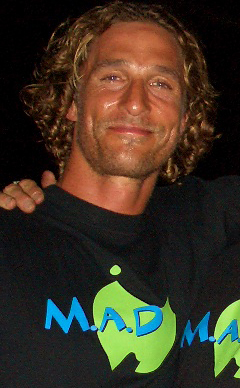 “All right, all right, all right!”
“All right, all right, all right!”Matthew McConaughey improvised his signature catchphrase in 1993’s Dazed and Confused. Shortly before the first movie scene he ever filmed, he was listening to a live Doors album. In between songs, singer Jim Morrison said, “All right, all right, all right!” and McConaughey parroted it.
Patsey the Slave
For her Oscar-winning portrayal of the childlike Patsey in 2013’s 12 Years a Slave, Lupita Nyong’o took inspiration from the late King of Pop: “There’s something very Michael Jackson–like about Patsey. She had her childhood stripped away from her suddenly as soon as she became of sexual age.”
Quasimodo
In the 1830s, French novelist Victor Hugo spent a lot of time at Paris’s Notre Dame Cathedral while it was undergoing renovations. Historians believe that one of the workers—a shy bossu, which means “hunchback” in French—was the inspiration for one of literature’s most famous characters.
Dungeons & Dragons Dragons
In 1977 Gary Gygax was having trouble creating all the strange creatures for his seminal role-playing game…until he found a 99-cent bag of toy monsters made in China. His friend Tim Kask recalls that the 37-year-old Gygax “ran home, eager as a kid to open his baseball cards, and then proceeded to invent the Carrion Crawler, Umber Hulk, Rust Monster, and Purple Worm—all based on those silly plastic figures.”
Loki
Actor Tom Hiddleston drew from three Hollywood greats for his portrayal of the maligned god in the Thor and Avengers movies: “Peter O’Toole (enigmatic reckless), Jack Nicholson (edgy and near-insane), and Clint Eastwood (simmering anger).”
The post You’re My Inspiration appeared first on Trivia Books and Facts | Uncle John's Bathroom Reader.
February 10, 2016
Odd NASCAR Sponsors
Beer, Gatorade, and auto parts are the kinds of sponsors you usually see plastered on NASCAR race cars. But many companies are willing to pay for that advertising exposure…even when it seems a little weird.
From 2001 to 2005, Mark Martin, one of the oldest drivers on the NASCAR circuit, drove a car bearing stickers promoting Viagra.
Driver Kevin Harvick’s car in 2002 sported ads for the 20th anniversary DVD re-release of E.T.: The Extra-Terrestrial.
In 2010, Mike Bliss drove a pink racing car decorated with pictures of reality star Kim Kardashian advertising her line of perfumes.
In 2002, driver Kurt Busch’s car was sponsored by Little Tikes—a company that makes toys for babies.
Juan Montoya’s 2013 car bore ads for Depends adult diapers.
In 1997, Tammy Jo Kirk—one of only about a dozen female NASCAR drivers—drove a car advertising Lovable brand bras.
In 2004, NASCAR forced Arnold Motorsports to remove car decals promoting a company called RedneckJunk.com. The website sold classified ads for people buying and selling hunting equipment and old truck parts. A NASCAR spokesman said the organization didn’t feel that “RedneckJunk projected the proper image of our sport.”
The Muppet Show’s 25th anniversary was commemorated with a series of NASCAR ad placements in 2002: Dale Jarrett drove a car with Kermit and Miss Piggy stickers, Casey Atwood had a Rowlf car, and Jeremy Mayfield’s car featured Bunsen and Beaker.
NASCAR drivers compete while sitting down, so it’s actually fairly logical that in 2008, one of the sponsors was the anti-chafing product Boudreaux’s Butt Paste.
It seems unlikely that any government agency—especially one charged with keeping people out of the country—would have to advertise. Still, in 2007, the U.S. Border Patrol sponsored a car.
The post Odd NASCAR Sponsors appeared first on Trivia Books and Facts | Uncle John's Bathroom Reader.
Name that Product
“Kleenex” is probably the most famous example of a “genericized trademark”—a product so popular that people use the brand-name to identify it. You’ve probably heard someone ask for a “Kleenex” more often than they ask for a “tissue.”
Here are some other name brands that have gone generic…and what, technically speaking, you should be calling them.
Bubble Wrap: Inflated cushioning
Dumpster: Front-loader waste container
Chapstick:
Lip balm
Lava Lamp: Liquid motion lamp
Frisbee: Flying disc
Hacky Sack: Footbag
Jet Ski: Personal watercraft
Jacuzzi: Whirlpool bath
AstroTurf: Artificial turf
JumboTron: Large-screen television
Onesie: Infant bodysuit
Superglue: Cyanoacrylate adhesive
Rollerblades: Inline skates
Tivo: Digital video recorder
Speedos: Swim briefs
Styrofoam: Extruded polystyrene foam
The post appeared first on Trivia Books and Facts | Uncle John's Bathroom Reader.
February 8, 2016
The Magic Kingdoms
Random facts about the happiest places on Earth: Disneyland and Walt Disney World.
Walt Disney hated seeing chewing gum on the ground, so he prohibited Disneyland and Disney World from selling it.
In fact, Disney didn’t want any garbage on the ground at all. So before Disneyland opened, he had planners study families at other parks. They found that if people had to walk more than 30 feet to find a trash can, they just threw the garbage on the ground. Result: you’re never more than 30 feet from a trash can in Disney parks.
About 21,000 people work at Disneyland; about 50,000 work at Disney World.
Number of visitors to Disney World per day in 1971: 10,000. Today: about 50,000.
Ever hear a Disney park employee say “Code V” into a walkie-talkie? They’re letting a cleanup crew know that a park guest has vomited.
Opening day adult admission at Disneyland in 1955: $1. At Disney World: $3.50 (1971). The rides cost extra. Today tickets are all-inclusive, and both parks charge the same admission: $99.
Average number of sunglasses turned in to Disney World’s lost and found every day: 200.
Mission Space, a space simulator at Disney World, requires more computing power than NASA needed to operate the space shuttle.
One of Disneyland’s earliest attractions (1956–60): the “Bathroom of the Future,” an exhibit sponsored by bathroom fixture manufacturer Crane Plumbing. It envisioned goldplated bathtubs and bidets.
Lots of kids have been to Disneyland, but three were actually born there.
Sleeping Beauty’s Castle displays a traditional family crest just above the drawbridge. That’s the Disney family crest.
Only times Disneyland has shut down unexpectedly: the national day of mourning for President John F. Kennedy (1963), after the Northridge earthquake (1994), and on September 11, 2001.
The “Pirates of the Caribbean” ride at Disneyland contains a real human skull.
The post The Magic Kingdoms appeared first on Trivia Books and Facts | Uncle John's Bathroom Reader.
February 5, 2016
Is Coffee Good or Bad for You?
Is it good for you? Is it bad for you? It’s good and bad for you.
It’s Good!
A Dutch study found that people who drink two to four cups of coffee a day have a 20 percent lower risk of developing heart disease than those who drink no coffee.
It’s Bad!
The caffeine in coffee increases the activity of catecholamines, which are stress hormones.
It’s Good!
According to a Finnish study, people in their 40s and 50s who drink between three and five cups of coffee per day have a 65 percent lower chance of developing dementia and Alzheimer’s disease later in life. (No such connection was found with tea.)
It’s Bad!
Caffeine stimulates the production of cortisol, which leads to general inflammation.
It’s Good!
In a study of women by the Harvard School of Public Health, those who drank four or more cups of coffee a day were 25 percent less likely to develop endometrial cancer, compared to women who drank no coffee.
It’s Bad!
Caffeine addiction decreases insulin sensitivity. Insulin is the hormone that processes carbohydrates and turns them into energy. Coffee makes it slightly harder for your body to process carbs.
It’s Good!

More than 1,000 different antioxidants (natural compounds that prevent diseases from taking root) have been isolated in unroasted coffee beans. A few hundred more develop during roasting.
It’s Bad!
Coffee is well known to cause stomachaches, and it can also lead to dysbiosis, or an imbalance of gut flora—the bacteria in your stomach that help digest food.
It’s Good!
The Archives of Internal Medicine published a study that found a decreased risk of cirrhosis among heavy drinkers who also drink coffee. Those who drank one cup regularly had 20 percent less risk. Those who drank four: 80 percent.
It’s Bad!
Coffee is a diuretic, which means it increases urine production. But when you excrete more urine, you also excrete more of minerals the body needs, particularly calcium, magnesium, and potassium.
The post Is Coffee Good or Bad for You? appeared first on Trivia Books and Facts | Uncle John's Bathroom Reader.
What is a Superfan?
Sure, you support your favorite sports team. You wear the team ball cap, have a team logo decal in your car window, maybe even drink out of an official team mug. But do you love it enough to dress up in team colors and dance around in public?
Robin Ficker
The Washington Bullets of the 1980s never contended for an NBA championship. Despite the Bullets’ losing ways, their arena was among opposing teams’ least favorite places to play. Reason: Robin Ficker. For 12 years, the season-ticket holder heckled Michael Jordan, Patrick Ewing, Charles Barkley, and other NBA stars from his seats directly behind the visiting team’s bench. Barkley was so impressed by his jeering that he even flew Ficker out to sit behind the Chicago Bulls bench during a playoff game against Barkley’s Phoenix Suns. But Ficker’s reign as the NBA’s top heckler ended in 1997 when the Bullets (now called the Wizards) moved to their new arena, the MCI Center. For reasons unknown, Ficker’s seat was relocated from behind the opposing bench to underneath the basket, robbing him of his ability to distract the other team’s players and coaches. Ficker immediately canceled his season tickets and didn’t attend another Wizards game until the 2014 playoffs.
Clipper Darrell
Darrell Bailey loves the Los Angeles Clippers. In the 1990s, he was fired from his job as an electrician. He went home and turned on a Clippers game, only to hear the announcers talking about what losers the Clippers were—that the team was a lost cause and was never going anywhere. Bailey could relate—his boss had told him similar things that day. That’s the moment Bailey decided to devote himself to being a die-hard Clippers fan.

He eventually got another job, affording him the season tickets that would make him “Clipper Darrell.” Since 2001, he’s been at every Clippers home game wearing a tailored suit in Clippers colors (red and blue). In 2010 the Clippers briefly lost Darrell’s support when they asked him not to use the word “Clipper” when making paid appearances. Darrell’s renunciation of his fandom made national headlines and drew support from star Clippers players Blake Griffin and Chris Paul. The two sides eventually came to a compromise: Clipper Darrell would notify the organization whenever he was hired to appear at an event. He’s now back in the stands at every game.
Ronnie “Woo Woo” Wickers
 There are two constants for the Chicago Cubs: waiting till next year (their last World Series win was in 1908), and Woo Woo Wickers. Born and raised on Chicago’s South Side, Wickers has been going to Cubs games and yelling his signature cheer of “Cubs! Woo! Cubs! Woo!” at the top of his lungs since the late 1950s. Wickers has had a hard life: he spent much of the 1980s homeless and, unable to hold down a job, earned money by washing windows and making personal appearances at Cubs-centric events. And not everybody loves him—some people find his loud cheers disruptive and annoying. But for most Cubs fans, Woo Woo’s unwavering optimism, even in the face of such criticism, makes him a living embodiment of baseball’s lovable losers.
There are two constants for the Chicago Cubs: waiting till next year (their last World Series win was in 1908), and Woo Woo Wickers. Born and raised on Chicago’s South Side, Wickers has been going to Cubs games and yelling his signature cheer of “Cubs! Woo! Cubs! Woo!” at the top of his lungs since the late 1950s. Wickers has had a hard life: he spent much of the 1980s homeless and, unable to hold down a job, earned money by washing windows and making personal appearances at Cubs-centric events. And not everybody loves him—some people find his loud cheers disruptive and annoying. But for most Cubs fans, Woo Woo’s unwavering optimism, even in the face of such criticism, makes him a living embodiment of baseball’s lovable losers.
Wild Bill Hagy
Except for maybe Cal Ripken Jr. (and his streak of 2,632 consecutive games played), the most consistent presence at Baltimore Orioles games in the 1970s and 1980s was Wild Bill Hagy. This superfan would stand on top of the home team’s dugout and lead fans in chants of “O-R-IO- L-E-S!” But in 1985 Memorial Stadium banned fans from bringing outside alcohol into the stands with them, and that made Hagy go wild. He staged a protest against the new rule by tossing his cooler onto the field. When police arrested Hagy for disorderly conduct, he vowed never to attend another Orioles game. But after the Orioles were sold and moved to a new stadium—Camden Yards—in 1992, Hagy agreed to return on special occasions to lead the “O-R-I-O-L-E-S!” chant… such as the night Ripken broke Lou Gehrig’s consecutive game streak in 1995. Hagy died in 2007 and has since been inducted into the Orioles Hall of Fame.
Fireman Ed
 New York City firefighter Edwin Anzalone started regularly attending New York Jets games at the Meadowlands in 1986. At every game, Ed’s brother, Frank, would hoist him up on his shoulders while Ed (wearing his fireman’s helmet) led the crowd in a chant of “J-E-T-S! JETS! JETS!
New York City firefighter Edwin Anzalone started regularly attending New York Jets games at the Meadowlands in 1986. At every game, Ed’s brother, Frank, would hoist him up on his shoulders while Ed (wearing his fireman’s helmet) led the crowd in a chant of “J-E-T-S! JETS! JETS!
JETS!” Dubbed “Fireman Ed” by local sports radio shows, he became one of the NFL’s most famous cheerleaders and was even featured in a Football Hall of Fame exhibit about fandom in 1999. But it all came to an end on Thanksgiving in 2012. During a sold-out, nationally televised game, Jets quarterback Mark Sanchez ran into a teammate’s backside and fumbled the ball, and an opposing team’s player ran it back for a touchdown. Anzalone was so embarrassed by how Jets fans booed and taunted Sanchez that he left the game during halftime. Fireman Ed still goes to Jets games, but he sits in a different section and no longer wears his fireman’s helmet.
The post What is a Superfan? appeared first on Trivia Books and Facts | Uncle John's Bathroom Reader.
February 4, 2016
Give a Hoot, Read a Book!
Getting kids to read anything other than what’s on their smartphones is tougher than ever these days.
The Weapon Of Mass Instruction
Argentinian artist Raul Lemesoff constructed what he calls “La Arma de Instruccion Masiva,” or “The Weapon of Mass Instruction.” It’s a 1979 Ford Falcon that he converted into a tank that shoots books instead of artillery shells. Lemesoff uses it to deliver books to local schools, kids and, well, anybody else that’s willing to take one. “My missions are very dangerous,” he explained. “I attack people in a very nice and fun way.“ Lemesoff provides the books free of charge but there is a stipulation: Those who take one must promise to actually read it.
Tundra Tales
The Green Bay Packers rolled out its fifth annual “Tundra Tales” program end of 2015. It encourages kids in grades four through six to improve their reading skills. If they manage to read at least 60 minutes per week outside of school for eight weeks, they’ll receive free tickets to the Packers’ Hall of Fame. Tracking sheets were available on the team’s website and participants must have a parent sign it in order to confirm that they actually did the reading. Tundra Tales has proven successful over the years. According to the Packers’ press office, 5,000 kids from across Wisconsin participate in the program.
Guys Read
Various studies show that convincing boys to read is tougher than it is with girls. That’s why author Jon Scieszka created Guys Read, a web-based literacy program devoted to making reading easier and more enjoyable for young males. The site features a Book of the Month and listings broken up into categories designed to appeal to boys with limited attention spans. Among them: “War,” “Classics That Actually Hold Up,” “Superheros and Supervillains,” and (our favorite) “At Least One Explosion.”
The post Give a Hoot, Read a Book! appeared first on Trivia Books and Facts | Uncle John's Bathroom Reader.
Food Trivia: The Life of Pies
There are scores of delicious variations of cooked fillings and pastry out there—both sweet and savory. (Warning: This might make you hungry.)
Pie
A baking dish is lined with a pastry crust that bakes up crispy or flaky. On top of that goes a sweetened fruit filling, a savory meat filling, or, once it’s cooled, a cream or custard filling. Sometimes it’s topped with another layer of crust, and sometimes it isn’t.
Cobbler
A pie without a bottom crust. Instead, sweetened (and often spiced) fruit is placed in a deep dish and topped with large lumps of sweetened biscuit dough. The bottom of the dough sinks into the fruit and absorbs the juices. When baked, the lumps of biscuit dough puff up and can resemble a cobblestone street, which may be how the dish got its name. (Another theory: The pies were originally made in wooden bowls called cobelers.)
Pandowdy
Similar to a cobbler, except the lumps of biscuit dough are flattened before they’re placed on top of the fruit. Pandowdys are generally baked in a skillet.
Grunt
The grunt is assembled like a cobbler but cooked on the stove. Dollops of dumpling batter are placed over the fruit as it simmers in a pot. Then the pot is covered and allowed to cook until the dumplings have steamed to perfection. The dish is said to get its name from the noise the dumplings make when they’re cooking. (They’re called “grunts” in Massachusetts, but in other parts of New England, they’re called “slumps.”)

Bird’s-nest Pudding
A pie consisting of apples that have been peeled and cored, but not sliced. Sugar or brown sugar is poured into the center of each apple; then batter is poured over the apples. When baked, the batter-covered apples look kind of like birds’ nests, giving the dish its name.
Buckle
The bottom layer of this dish is made with cake batter, not a pastry crust. Fruit is then placed on top of the batter or even mixed in with it. Then it’s topped with a crumble mixture and baked.
Crisp
Like a buckle, it’s fruit topped with a crumbly concoction and baked. The difference: There’s no cake batter on the bottom, and the top is usually made with rolled oats.
Brown Betty
The betty dates to colonial America and used whatever fruit was in season; today, apples are typically used. Brown sugar (not white) is used, and layers of buttered breadcrumbs and fruit are lined in the pan in alternating layers.
Sonker
North Carolina’s take on the cobbler, this is a soupy deep-dished dessert made in a large square baking pan traditionally called a bread pan. The pan is filled with fruit (peaches, strawberries, or cherries), then topped with a pastry crust and baked. Some purists insist that true sonkers are made with sweet potatoes, not fruit.
Lazy Sonker
A sonker topped with batter instead of pastry crust (to save the cook the trouble of rolling out the crust).
Clafoutis
A simple centuries-old French peasant dish. Fruit (traditionally black cherries, unpitted) is topped with crêpe batter, which is like pancake batter, but eggier. The result: a spongy dessert, similar to bread pudding. Why leave pits in the cherries? Because, say the French, when baked they give the cherries extra flavor.
Pasty
This one’s usually savory, not sweet. A circle of pie crust is filled with beef, venison, lamb, or fish, along with potatoes, rutabaga, and other vegetables; then the crust is folded over onto itself, creating a half circle. After it’s crimped shut and pierced with vent holes, the pasty is baked in the oven. The best-known pasties come from Cornwall, in southwest England.
Tiddy Oggy
Another Cornish dish. It’s a steak pasty, but without the steak and with an extra serving of potato (“tiddy”) instead.
Birdie
A Scottish pasty made with minced steak, butter, and (sometimes) onions, but leaving out the potatoes and vegetables found in Cornish pasties.
Samosa
The Samosa hails from South Asia and consists of a pastry dough filled with boiled potato, onion, green peas, and spices. The dough is folded around the filling to make a triangle shape, then the samosa is fried in oil and served hot with chutney.
The post Food Trivia: The Life of Pies appeared first on Trivia Books and Facts | Uncle John's Bathroom Reader.
February 1, 2016
Food Firsts
The first thing Uncle John consumes in the morning: a handful of wasabi peas, washed down with black coffee. Here are some other landmark moments in the history of food.
First Indian Restaurant in the West
In 1810 Sake Dean Mahomed, a captain in the British East India Company, opened a restaurant in London that served authentic food from his native India. He called it the Hindoostanee Coffee House. The restaurant closed within the year…but by the mid- 20th century, “curry houses” were the most popular form of ethnic food and fast food in England.

First Food Eaten in Space
On his orbit around the Earth in 1962, astronaut John Glenn ate applesauce.
First Food Magazine in the U.S.
Gourmet, which began publishing in 1941 and closed down in 2009. The first issue contained a recipe for wild bear.
First American Culinary School
When American restaurants faced a labor shortage during and after World War II, the New Haven Restaurant Institute was founded in Connecticut to train new chefs. It’s now the Culinary Institute of America.
First Genetically Engineered Food
The Flavr Savr, a breed of tomato bioengineered by food scientists, who altered and combined the genes of several different tomato varieties to make one that was more resistant to spoilage. It was approved for sale by the FDA in 1994.
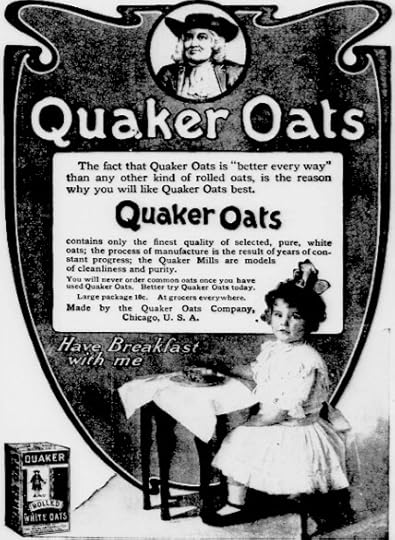 First Branded Food
First Branded FoodQuaker Oats became the first trademarked breakfast cereal in 1877 and uses essentially the same label today.
First “Weird Al” Yankovic Song about Food
The comedy singer is best known for food-related parodies such as “Eat It” and “Fat.” His first food song was the second song he ever released: “My Bologna,” a 1980 parody of the Knack’s “My Sharona.” The original version featured Weird Al—solo—on vocal and accordion. He recorded it in his bathroom.
First Diet Soda
Kirsch Bottling, a Brooklyn company that catered primarily to hospitals, launched a locally distributed sugar-free ginger ale in 1952. Called No-Cal, it was marketed to diabetics and dieters. The first nationally available diet soda: Royal Crown’s Diet Rite Cola (1958).
First Bananas in the United States
The 1876 Philadelphia Centennial Exposition featured a tropical plant exhibit, where vendors sold bananas for 10 cents each (about $2 today).
First Weight-Loss Program
Jean Nidetch had a private weight-loss club for fellow New York City housewives. It did so well when she started it in 1963 that she formed Weight Watchers later that year.
First Foods Introduced to the New World
Christopher Columbus introduced Native Americans to the onions, garlic, wheat, barley, olives, and lettuce he brought from Spain. In return, he took back to Europe tomatos, potatoes, corn, beans, squash, and avocados.
First Pizza Delivery
In 1889 Naples, Italy, pizzeria owner Raffaele Esposito hand delivered a pie to a private home where the king and queen of Italy were staying on a visit to the city.
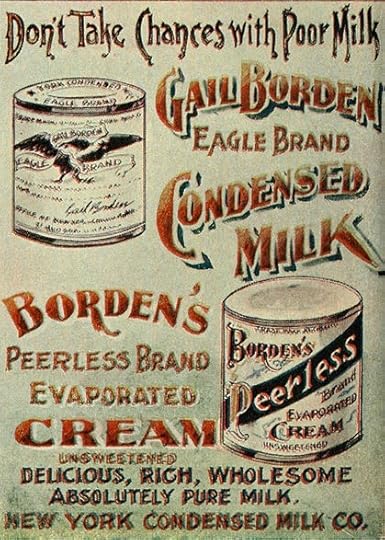 First Commercially Available Canned Food
First Commercially Available Canned FoodCondensed milk. Gail Borden started condensing and canning milk in 1856. The business took off when he got a government contract to supply canned milk to the Union Army during the Civil War.
First Chinese Restaurant in the United States
An influx of workers from China poured into northern California immediately after the Gold Rush of 1848. Chinese immigrant Norman Asing opened a restaurant serving Chinese food in San Francisco a year later—Macao and Woosung, an all-you-can-eat buffet. Cost: $1.
First Commercially Available Microwave Oven
The Radarange, produced by Amana, went on sale in 1947. Cost: $3,000 (about $29,000 today)
The post Food Firsts appeared first on Trivia Books and Facts | Uncle John's Bathroom Reader.
You’re My Inspiration
More fascinating secrets behind where the architects of pop culture get their ideas. Some of these may surprise you.
Annie Wilkes
The psychotic nurse in Stephen King’s Misery (played by Kathy Bates in the 1990 movie) was based on pediatric nurse Genene Jones, imprisoned for overdosing kids and then reviving them so she would be seen as a hero. (Not all of them survived.) King also based Annie on his own demons: “I was having such a tough time with dope. Annie was my drug problem, and she was my number-one fan. God, she never wanted to leave.”

Long John Silver
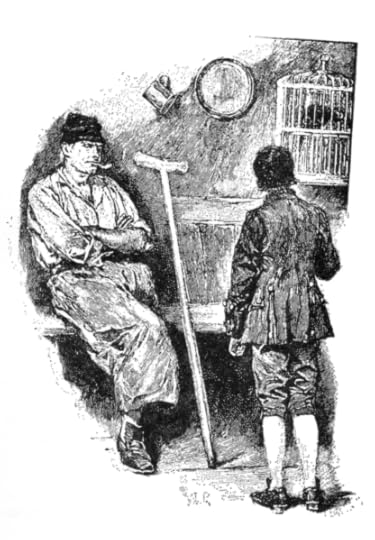
The one-legged pirate in Robert Louis Stevenson’s classic novel Treasure Island was based on a friend, poet William Henley, who was a loud, gregarious fellow with only one leg. “I will now make a confession,” wrote Stevenson to Henley years later. “It was the sight of your maimed strength and masterfulness that begot Long John Silver.”
Moe Szyslak
Matt Groening modeled The Simpsons’ grumpy bartender after a bartender named Red Deutsch, who was known for his angry responses to prank callers. Moe’s face is a combination of a gorilla and comedian Rich Hall. When Hank Azaria auditioned for the part, he mimicked Al Pacino in Dog Day Afternoon. Groening told him to make the voice “more gravelly,” and Moe was born.
Skull and Roses
 The Grateful Dead’s logo was created in 1971 by Stanley “Mouse” Miller, who was designing a concert poster for the band. He found a 1913 edition of the eleventh-century Persian poem The Rubaiyat of Omar Khayyám, illustrated by E. J. Sullivan.
The Grateful Dead’s logo was created in 1971 by Stanley “Mouse” Miller, who was designing a concert poster for the band. He found a 1913 edition of the eleventh-century Persian poem The Rubaiyat of Omar Khayyám, illustrated by E. J. Sullivan.
One of Sullivan’s drawings was the image of a skeleton wearing roses on its head. “I thought, ‘That might work for the Dead.’”
“I’d Buy That For A Dollar!”
In “The Marching Morons,” a 1951 sci-fi story by Cyril M. Kornbluth, a popular catchphrase of the future is “Would you buy that for a quarter?!” In 1987 RoboCop screenwriter Edward Neumeier added 75 cents and made it a popular catchphrase in futuristic Detroit.

The post You’re My Inspiration appeared first on Trivia Books and Facts | Uncle John's Bathroom Reader.






